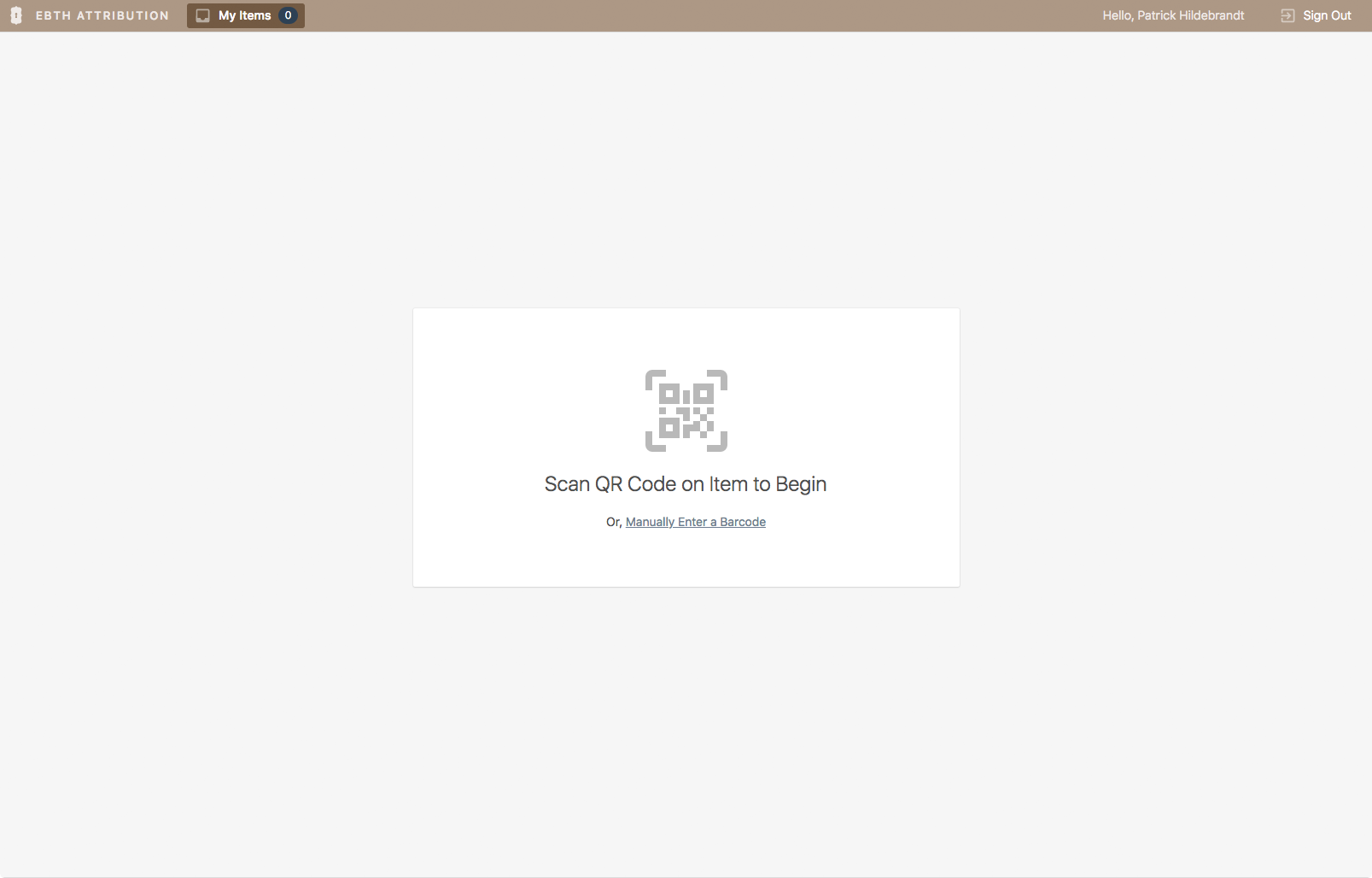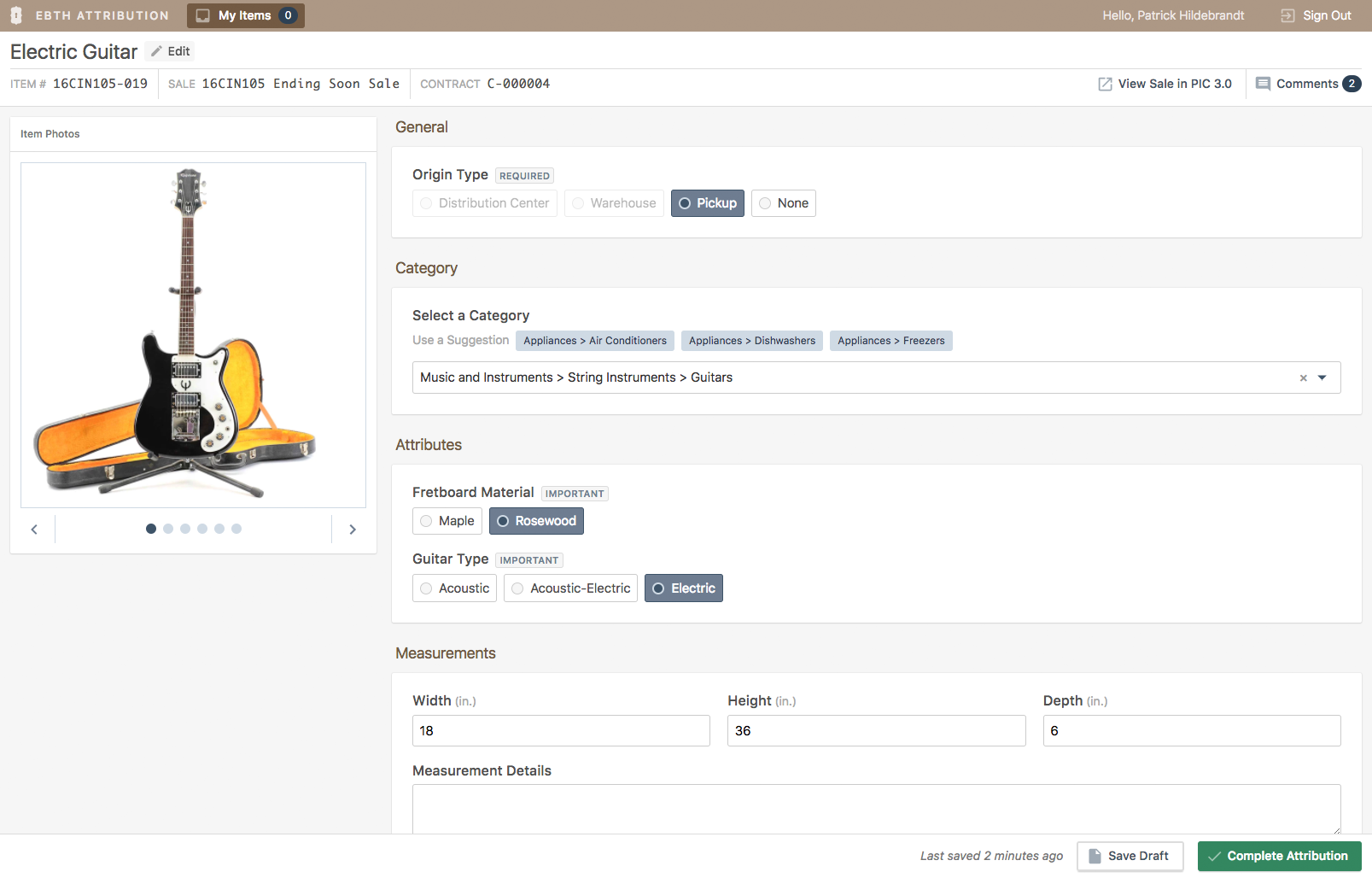Getting the details right
EBTH Attribution
Watch Video
of EBTH Attribution
Summary
As a member of the EBTH team responsible for internal product design, I created a user-friendly solution for EBTH Attributors to record an item’s measurements, materials, and other basic attributes.
By conducting user testing and continuously iterating the design, we were able to improve the efficiency of item attribution by approximately 25%.
Role
Product Design Lead
Tasks
User Research & Testing, Wireframing, Prototyping, High-Fidelity Design, HTML & CSS Implementation
EBTH Attribution: Step by Step
content goes here


